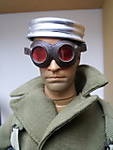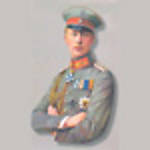Quoted Text
Quoted Text
--Dennis , you're diluting it with water then adding back more acrylic resin ..?
My fault: I of course meant Tamiya X-21 Flat base. It is actually a matt medium and when painting figures the amount used is somewhere in the scale of what sticks to the tip of a toothpick. Anyway: thanks for pointing out. Tamiya X-21 Flat base is the weapon of choice.
Artist like Danilo Cartacci use plain tap water and, regarding to his work, I would say that water indeed does come somewhere into higher spheres; judging by the results he achieves.
I do not have a dog in this fight. I do not care what others do. But flat base in combination with water and a high degree of thinning was for me the "breakthrough" when dealing with Vallejos. Just another hint someone could follow. Everybody has to find his own way and if you found something that works: excellent. But it is simply not true that you need Brand thinner to get good results. If some of the world`s best figure painter use the "tap water-system", it can`t be sooo bad.
The hint with the flat base will, depending on the original posters desicions, work with the Vallejo thinner aswell, I guess. But if you try, use the Tamiya one; it is more effective than Vallejos.
Best Regards
Dennis
Yep i quote 101%!...i know sound odd but in the "Figurine world" a tiny-tiny drop of Tamiya X-21 is the way to go for a good flat finish with water based acrylics like Vallejo,a lot's of the top paiters like Cartacci and others use this tecnique,but require some test because if you put too much you stuff-up everything.
I prefere enamel and oils but when i use acrylics for pait figurine i do me to "that madness" and is spot-on!...


















